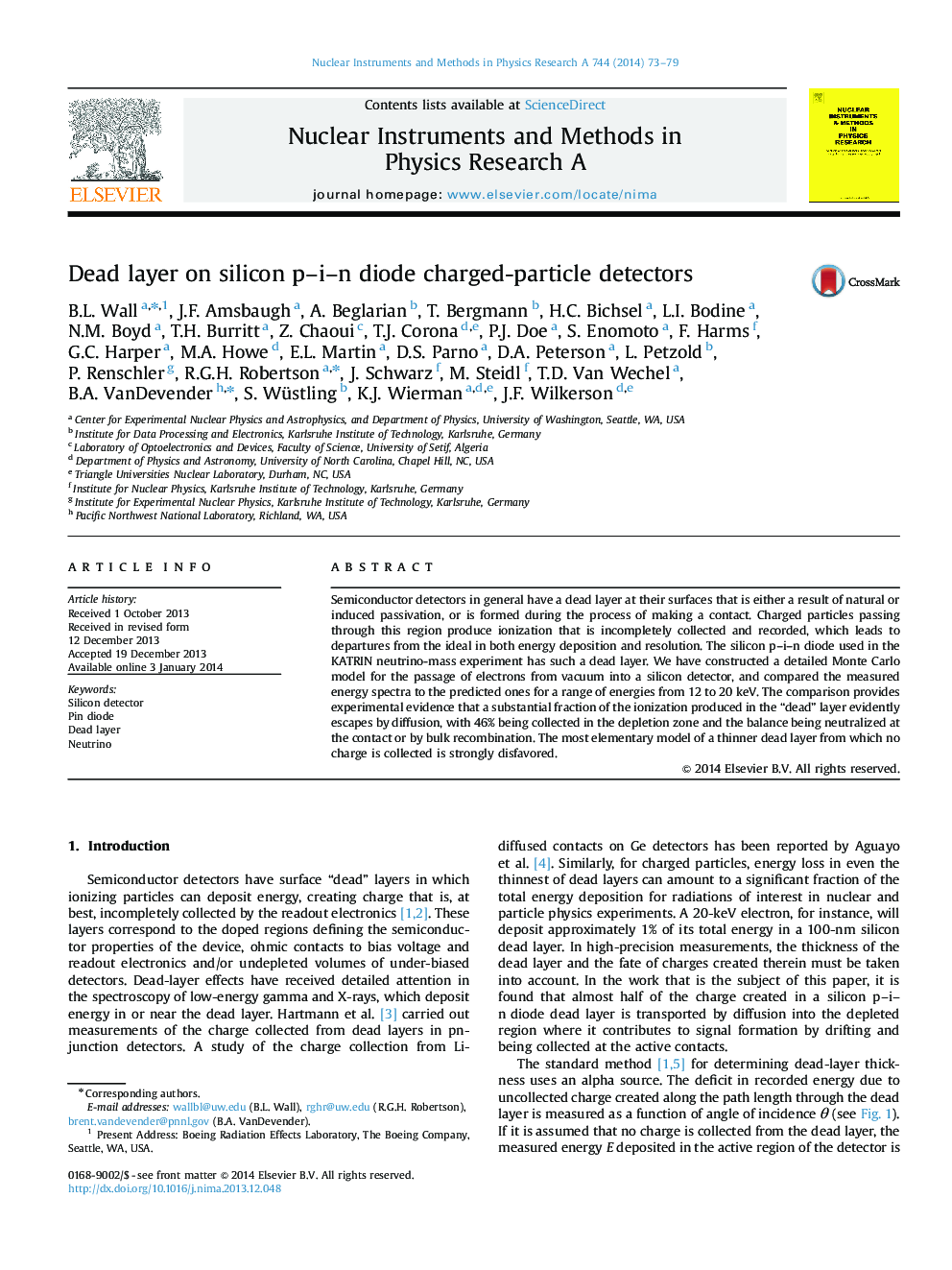| Article ID | Journal | Published Year | Pages | File Type |
|---|---|---|---|---|
| 8176614 | Nuclear Instruments and Methods in Physics Research Section A: Accelerators, Spectrometers, Detectors and Associated Equipment | 2014 | 7 Pages |
Abstract
Semiconductor detectors in general have a dead layer at their surfaces that is either a result of natural or induced passivation, or is formed during the process of making a contact. Charged particles passing through this region produce ionization that is incompletely collected and recorded, which leads to departures from the ideal in both energy deposition and resolution. The silicon p-i-n diode used in the KATRIN neutrino-mass experiment has such a dead layer. We have constructed a detailed Monte Carlo model for the passage of electrons from vacuum into a silicon detector, and compared the measured energy spectra to the predicted ones for a range of energies from 12 to 20Â keV. The comparison provides experimental evidence that a substantial fraction of the ionization produced in the “dead” layer evidently escapes by diffusion, with 46% being collected in the depletion zone and the balance being neutralized at the contact or by bulk recombination. The most elementary model of a thinner dead layer from which no charge is collected is strongly disfavored.
Related Topics
Physical Sciences and Engineering
Physics and Astronomy
Instrumentation
Authors
B.L. Wall, J.F. Amsbaugh, A. Beglarian, T. Bergmann, H.C. Bichsel, L.I. Bodine, N.M. Boyd, T.H. Burritt, Z. Chaoui, T.J. Corona, P.J. Doe, S. Enomoto, F. Harms, G.C. Harper, M.A. Howe, E.L. Martin, D.S. Parno, D.A. Peterson, J.F. Wilkerson,
